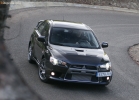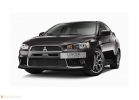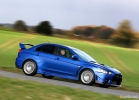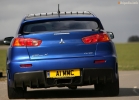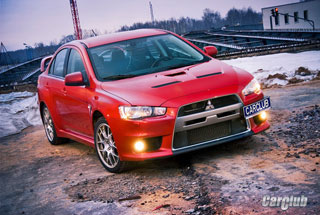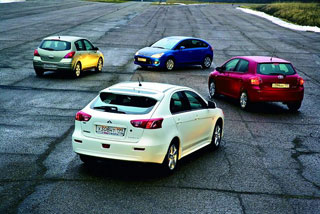Test Drive Mitsubishi Lancer Evolution X since 2008 Sedan
Test Drive in Germany: Previously caused admiration, today no
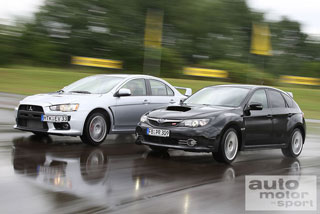 Mad dogs in the bottom of the hot compact cars do they still bite? From the chain, Mitsubishi Lancer Evolution and Subaru Impreza WRX Sti Sport, Simulators of rally cars.
Mad dogs in the bottom of the hot compact cars do they still bite? From the chain, Mitsubishi Lancer Evolution and Subaru Impreza WRX Sti Sport, Simulators of rally cars. Eternal enmity continues Mitsubishi Lancer Evolution against Subaru Impreza WRX STI. For several generations, rally simulators with rear spoilers are involved in the desperate struggle. Only now Subaru is asked around Mitsubishi in the guise of a more compact passenger car. Maybe the trick lies in reduced sizes? Little weight for better overclocking, smaller dimensions to enhance maneuverability?
Perhaps impreza with a large rear door is designed to shine, violate the established rules? It has become shorter than the former generations of the model, but also harder. And this is not a very positive trend. And yet, in the luggage compartment it became more convenient to fold things, and with folded rear seats, the volume of the luggage compartment increases to 1,216 liters. But the Lancer will hardly allow you to catch yourself by surprise: it demonstrates a spacious interior and convenient access to the trunk, and in addition, such features of a city car, as an improved overview, an improved dashboard and all kinds of safety equipment. Impreza can add only a more convenient position of the driver to this, which is achieved due to the adjustable steering wheel. And she is quieter, although this herself is ashamed.
After all, along with points, this quality brings her a lot of ridicule. Quiet? Mitsubishi, on the contrary, focuses on the emotions of the racing car, which is noise, rattles, whistles. This is exactly the sound of a street rally car. So, back to the main thing, to the dynamics. Both models are equipped with high-power engines, full-wheel drive, and from recently and identical tires: Dunlop SP Sport 600. To reach the power of 295 hp. Lancer has a sufficiently two-liter row four with a large turbocharger.
Engines with turbochargers
Impreza has a 300-strong also 4-cylinder, only the opposite engine with a turbocharger, but the working volume is 2.5 liters, due to which the torque is greater (366 Nm in Lanevo, 407 nm in STI). To pass the acceleration test, a system of course stability (ESP), as well as a traction control system (TRC), was disabled.
Now the driving force depends solely on the full drive. At the start of Subaru with difficulty shifts from the place; Too much effort and little sense. Only when you again try on a sandy surface, four wheels are rotated, the engine wakes up and the driver feels characteristic nearest jerks back. Acceleration until hundreds for 5.6 seconds will be achieved, albeit with concessions. The same right to start on slippery coverage is provided by Mitsubishi. His row motor turns out to be more obedient, he skillfully and play gains momentum, and the car reaches the speed of 100 km / h per tenth seconds faster ... But then it loses this advantage due to uncomfortable gear ratios of its 5-speed transmission. Due to the smaller difference between the subaru 6-speed transfer ratios, it is faster for up to 200 km / h. But Subaru is deprived of leadership at the last transmission: at low speeds, the sixth gear is suitable only in order to reduce excessive fuel consumption. (The detailed alignment of overclocking time is presented in the table.)
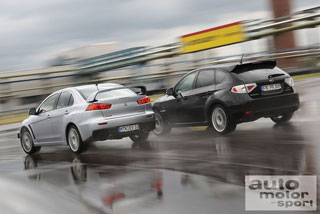 Paradise speakers
Paradise speakers And the consumption for this class of cars from Impreza is really too high 14.9 liters per 100 km on average for the test. Mitsubishi consumption is not at all negotiable (16.1 liters). And on the full gas, their appetites increase compared to the minimum flow rate of 14 and 11 liters, respectively. Casco Insurance Tariffs for these cars are also too high an annual fee commensurate with one fifth part of the value of the new Lancer. But, by and large, the real fan of these sport-karov knows what he spends his savings on the entry into the heaven dynamics of movement, which is forever, EVO and WRX.
We leave for a roadway, right into the world of turns. As usual, Mitsubishi is happily mastered on the road, with greed breaks in turn and then interferes with ESP. The dynamics control system confidently and competently controls the passage of the climax and only at the output of the turn stops the engine power. What is it? On previous models it was possible at all possible to feel the limit seemed to him simply can not be accelerated. But looking at the current situation in the field of dynamics, it can be noted that with the same speed it goes and VW Golf GTI, and it is easier to manage. But earlier EVO was comparable to Porsche GT3. But those times were rushed into the fly.
Still in turn?
Nevertheless, a trip to Subaru can end very dramatic. This car loses the obedient Lancer in maneuverability, and it is necessary to let go of the gas pedal on a wet covering, and the car can suddenly turn over 180 degrees. Therefore, with a strong demolition of the driver from the driver, the ownership of the skill of management is required if he does not want to be on the oncoming lane. In the WRX STI, the ESP system comes to the rescue too late, but then it takes over the need for herself that, along with the tangible influence of the transmission, the control is concerned.
In addition, the brake path on the slippery coating leaves much to be desired, although Impreza stops about 20 meters earlier than the Lancer, breaking beyond the measuring site. Such results are disappointed and do not remind the delight of the past years. Still, the former models, passing any turn once or two, remained relics of the glorious time, which took place quite recently, but it seems so far.
To return to today, not enough evolution alone, both manufacturers must completely reconsider their concepts if they wish their cars again considered worthy rivals of Sports-Karov. In the meantime, the victory of Mitsubishi Lancer EVO can not be called brilliant
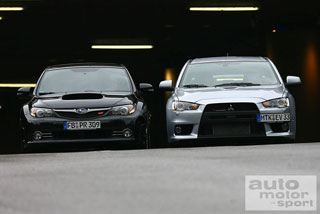 just a little better than Subaru Impreza Sti. Lancer can only be advised by the narrow circle of buyers: the rally participants who wish to purchase a private car. Only in this case, and, above all, on loose coating, improved differentials of the full drive are able to show their unique opportunities. Previously, EVO and WRX caused admiration, there is no longer today.
just a little better than Subaru Impreza Sti. Lancer can only be advised by the narrow circle of buyers: the rally participants who wish to purchase a private car. Only in this case, and, above all, on loose coating, improved differentials of the full drive are able to show their unique opportunities. Previously, EVO and WRX caused admiration, there is no longer today. Results of dough
Following the test, Mitsubishi Lancer Evolution scored 430 points out of 650. The essential advantage of it was provided with confident and obedient management, but too high fuel consumption and absurdly expensive maintenance significantly reduced its assessment.
Subaru Impreza WRX STI received 424 points out of 650. It keeps the road well when changing the load on steep turns, and after all, the all-wheel drive car should be able to. Yes, and in terms of security, it loses to its competitor.
Specifications and test results
general information
Brand Mitsubishi Subaru.
Model Lancer Evolution X Impreza WRX STI
Release date 08/2008 02/2008
Basic cost 45 950 euros 48 770 euros
Engine
Type inline horizontal opposite
Number of cylinders 4 4
Volume 1 998 cubic meters. CM 2,457 cubic meters. cm
Power 295 hp (217 kW) at 6,500 rpm 300 hp (221 kW) at 6,000 rpm
Torque 366 nm at 3,500 rpm 407 nm at 4,000 rpm
Eco-class Euro-4 Euro-4
Tires
Brand Dunlop SP Sport 600 Dunlop SP Sport 600
Tire size 245/40 R18 245/40 R18
The weight
Equipped 1 573 kg 1 515 kg
Maximum load 467 kg 465 kg
dimensions
Full length 4 505 mm 4 415 mm
Full width 1 810 mm 1 795 mm
Full height 1 480 mm 1 475 mm
Wheelbase 2 650 mm 2 625 mm
Acceleration
0-80 km / h 3.9 s 3.8 s
0-100 km / h 5.5 s 5.6 s
0-120 km / h 7.6 s 7.6 s
0-130 km / h 8.7 s 9.1 s
0-160 km / h 13.5 s 13.7 s
0-180 km / h 18.5 from 18.5 s
0-200 km / h 25.9 from 24.6 s
0-100 km / h (declared) 5.4 from 5.2 s
Maximum speed 240 km / h 250 km / h
60-100 km / h (5th transmission) 10.2 s 8.9 s
80-120 km / h (5th transmission) 7.9 s 7.1 s
80-120 km / h (6th transmission) - 12.6 s
Fuel consumption
Super Plus Fuel Type Super Plus
Minimum 8.5 l per 100 km 8.0 l per 100 km
Maximum 22.8 liters per 100 km 20.6 liters per 100 km
The average for the results of the test is 16.1 liters per 100 km 14.9 l per 100 km
Cost in Germany
Basic version 45 950 euros 48 770 euros
Casco (Max.) 11 213 euros 7,303 euros
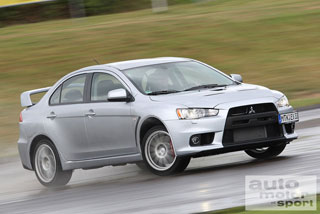
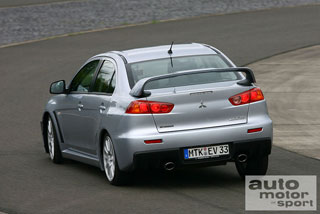
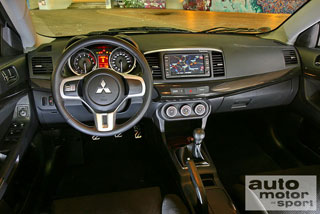
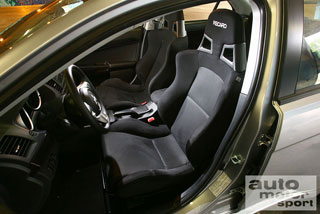
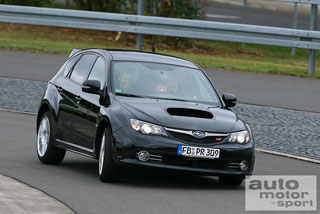
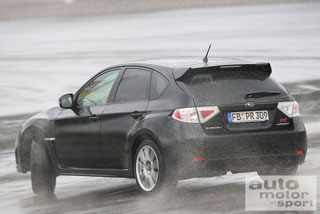
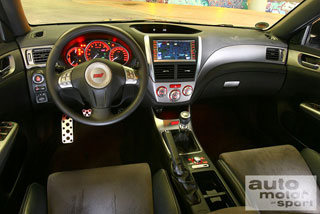
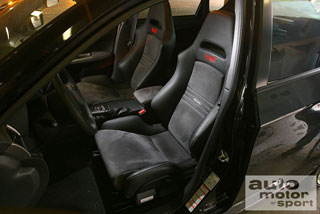
A source: auto Motor Und Sport

